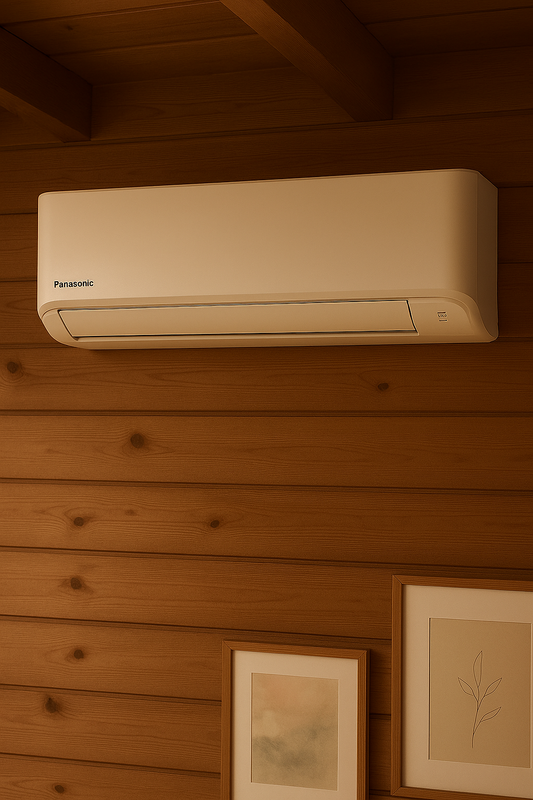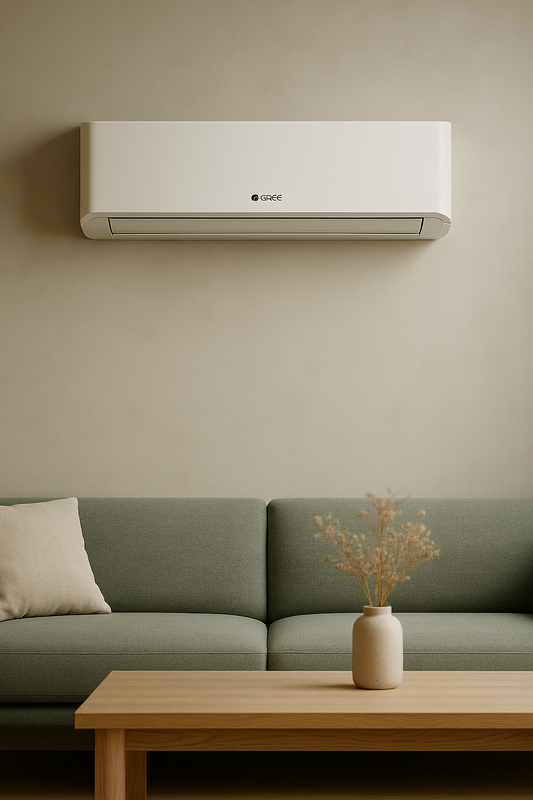Installera Jordvärme: En Effektiv och Hållbar Uppvärmningsmetod
Inledning
Jordvärme, även känt som geotermisk värme, är en innovativ metod för att värma och kyla byggnader med hjälp av energi lagrad i marken. I denna artikel kommer vi att gå igenom processen för att installera jordvärme, dess fördelar och användningsområden.
Definition och Bakgrund
Jordvärme utnyttjar den naturliga värmen som lagras i marken för att reglera inomhustemperaturen. Genom att använda en serie av rör som är nedgrävda i marken kan värmeenergi hämtas upp under vintermånaderna och avlägsnas under sommarmånaderna. Denna metod är hållbar och miljövänlig då den inte kräver förbränning av fossila bränslen.
Fördelar och Användningsområden
En av de främsta fördelarna med att installera jordvärme är dess låga energiförbrukning och minimala miljöpåverkan. Genom att utnyttja den konstanta temperaturen under markytan kan jordvärme ge kostnadseffektiv uppvärmning och kylning året runt. Detta gör det till en attraktiv lösning för både bostäder och kommersiella fastigheter.
- Låga driftskostnader över tid
- Miljövänlig och hållbar energikälla
- Minskar beroendet av fossila bränslen
- Kan integreras med befintliga uppvärmningssystem
- Lång livslängd med minimalt underhåll
Relaterade Tekniker, Begrepp eller Variationer
En vanlig variation av jordvärmeinstallation är den vertikala eller horisontella metoderna för att lägga rören i marken. Vertikal installation kräver djupare borrning och passar bäst för områden med begränsat utrymme, medan horisontell installation är mer lämplig för större ytor. Dessutom finns det även möjligheten att kombinera jordvärme med solenergi för att ytterligare minska energiförbrukningen.
Vanliga Frågor (FAQ)
Är jordvärme lämplig för alla klimat?
Ja, jordvärme kan användas i de flesta klimat. Den konstanta temperaturen under markytan ger en pålitlig energikälla oavsett områdets klimatförhållanden.
Vilka är de initiala kostnaderna för att installera jordvärme?
De initiala kostnaderna för installation kan vara högre jämfört med konventionella uppvärmningssystem, men de långsiktiga besparingarna på energiförbrukning kan kompensera för dessa kostnader över tid.
Hur lång tid tar det att installera jordvärme i en typisk bostad?
Installationstiden kan variera beroende på storleken på fastigheten och vilken installationsmetod som används. Vanligtvis tar det några veckor att slutföra installationen av jordvärme i en typisk bostad.
Sammanfattning
Jordvärme är en effektiv och hållbar metod för att reglera inomhustemperaturen med minimal miljöpåverkan. Genom att dra nytta av markens naturliga värme kan jordvärme erbjuda låga driftskostnader och långsiktig energieffektivitet. Genom att överväga installation av jordvärme kan fastighetsägare och hushåll dra nytta av en pålitlig och miljövänlig uppvärmnings- och kylningsteknik.
Installation Process
The installation process for geothermal heating and cooling systems involves several key steps. The first step is to conduct a thorough assessment of the property to determine the most suitable layout for the ground loops. Next, the ground loops, which consist of high-density polyethylene pipes, are installed in the ground. These loops are then connected to the heat pump inside the building. The heat pump circulates a mixture of water and antifreeze through the loops to absorb or release heat from the ground, depending on the season. Finally, the system is tested and commissioned to ensure optimal performance.
Energy Efficiency and Cost Savings
Geothermal heating and cooling systems offer significant energy efficiency and cost-saving benefits. By harnessing the stable temperature of the earth, these systems can deliver substantial reductions in energy consumption compared to traditional heating and cooling methods. The initial investment in a geothermal system is often offset by lower operating costs over the system's lifespan, resulting in long-term savings for property owners.
Case Study: Residential Geothermal Installation
In a residential setting, the installation of a geothermal heating and cooling system can provide valuable insights into the benefits and practical considerations of this technology. For example, a case study of a typical suburban home demonstrates how the property's energy consumption significantly decreased after the installation of a geothermal system. This reduction in energy usage not only resulted in cost savings for the homeowner but also contributed to a lower environmental impact.
Environmental Impact
Geothermal heating and cooling systems have a minimal environmental impact compared to traditional HVAC systems. By utilizing the earth's renewable energy, these systems reduce greenhouse gas emissions and reliance on non-renewable energy sources. This aligns with the global push towards sustainable and eco-friendly building practices, making geothermal technology a compelling choice for environmentally conscious property owners.
Regulatory and Incentive Considerations
Property owners considering the installation of geothermal systems should be aware of available regulatory frameworks and financial incentives. In many regions, there are government programs and tax incentives aimed at promoting the adoption of renewable energy technologies. Understanding and leveraging these opportunities can make geothermal heating and cooling systems even more economically attractive for property owners.
System Maintenance and Longevity
Proper maintenance is essential for ensuring the longevity and optimal performance of geothermal heating and cooling systems. Regular inspections, filter changes, and system cleanings are recommended to prevent potential issues and maintain energy efficiency. With proper care, geothermal systems have a lifespan of 25 to 50 years, surpassing the longevity of many conventional HVAC systems.
Geothermal Heat Pump Technology
The heart of a geothermal heating and cooling system is the heat pump, which utilizes the earth's consistent temperature to transfer heat. This technology is highly efficient and can provide both heating and cooling by simply reversing the heat exchange process. Understanding the inner workings of geothermal heat pumps can help property owners appreciate the advanced engineering behind these systems.
Geothermal Retrofitting for Existing Buildings
For existing buildings looking to transition to geothermal heating and cooling, retrofitting options are available. Retrofitting involves adapting the property's infrastructure to accommodate a geothermal system, offering an opportunity to upgrade to a more sustainable and cost-effective heating and cooling solution without the need for a complete overhaul.
Industry Innovations and Advancements
Ongoing research and development in the geothermal sector continue to drive innovations and advancements in system efficiency, installation practices, and environmental impact. Stay informed about the latest industry trends and technological breakthroughs to make informed decisions when considering geothermal solutions for your property.
Geothermal System Sizing and Design
The proper sizing and design of a geothermal heating and cooling system are crucial to its overall performance. Factors such as property size, insulation, and local geological conditions play a significant role in determining the optimal system configuration. Working with experienced professionals to assess and design a tailored geothermal system can maximize its effectiveness.
Geothermal Energy and Property Value
The installation of a geothermal heating and cooling system can enhance the overall value of a property. Potential buyers are increasingly recognizing the long-term benefits and sustainability credentials of geothermal technology, making it a valuable investment that adds to the desirability and marketability of a property.



